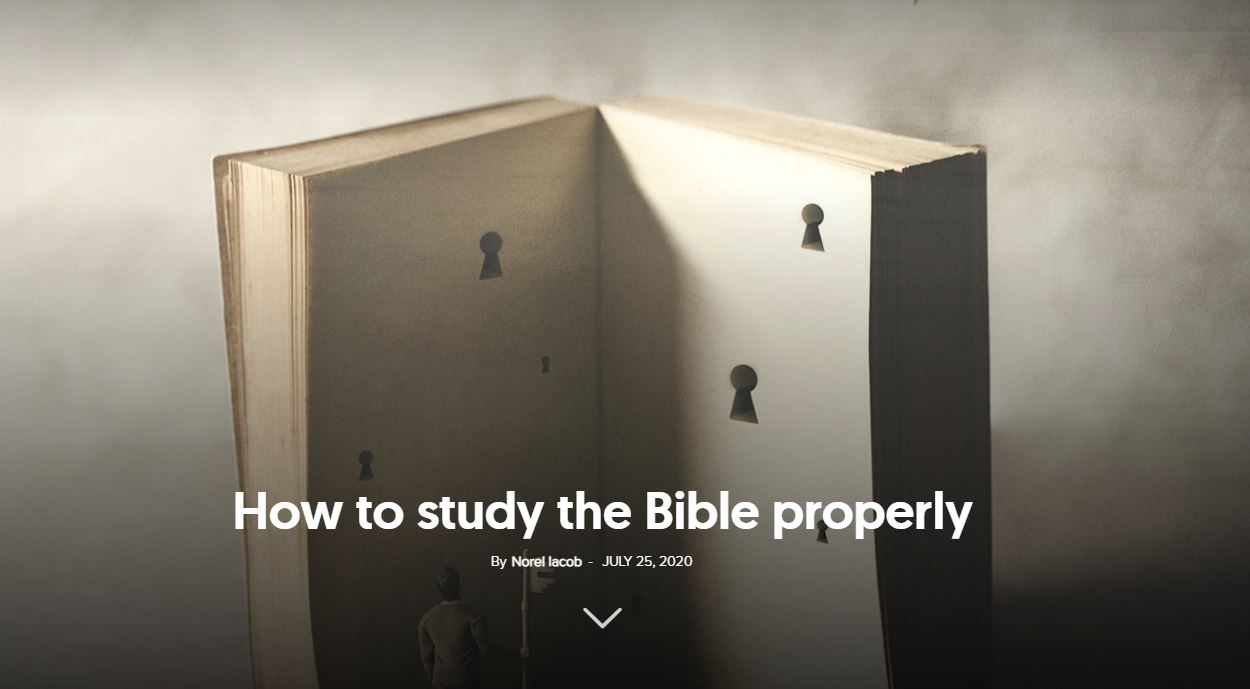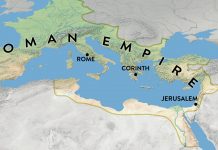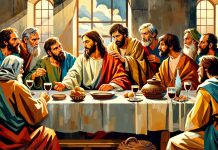Fairy tales begin with the words “Once upon a time”, which automatically send us into a timeless world of fantasy, imagination, and daydreaming.
Critics of Christianity and of the Bible try to draw parallels between themes and (especially) stories presented by the Bible, and fairy tales or legends, in order to conclude that the Bible is a work of fiction, like many other fantastic events scattered among the folkloric treasures of nations around the globe.
The Bible claims to be transmitting historical truth.
However, the Bible—and in this case the New Testament, to which we will refer in this article—claims to be a transmitter of historical truth. In the book Acts of the Apostles, written by Dr Luke (Jesus’s disciple responsible for the eponymous gospel), readers can trace 84 elements (geographical details, road descriptions, towns, and historical figures correctly identified during their public activity) which were later confirmed by historical and archaeological research.[1] Thus, the expression “once upon a time” can very well describe the unique time that Jesus lived on Earth, without any trace of legend, fairy tale, or invented story—only reality.
Having the certainty of the time in which the events of the New Testament took place, it is easier for us to identify the histories, ideologies, thought patterns, customs, and cultural elements of the time, and thus understand the context of Jesus’ speeches to accurately identify the purpose for which He intended them.
The theology of reward
Let’s consider the parable of Lazarus, a poor man, and the rich man in Luke 16:19-31. Darrell L. Bock argues clearly and decisively that the story presented by Jesus is not a real one, but a parable.[2] Although history presents all the elements of a parable—of a work of fiction with meaning—Bock explains why, despite the evidence, there are still some commentators who consider the story a reality or divine revelation: “Some avoid identifying [the story] as a parable, for fear of eliminating valuable information about the doctrine of life after death, since a parable is more of a pictorial and representative description than a real story.”[3]
The parable of Lazarus, a poor man, and the rich man is based on an ancient Egyptian story, and it probably entered Jewish folklore after being brought by the Jewish diaspora from Alexandria to Palestine.
Hugo Gressmann drew attention to the Egyptian story of Si-Osiris and his father, Setme Chamois.[4] Father Setme marvels at the luxurious funeral of a rich man and the simple and anonymous one of a poor man, expressing his desire to share in the fate of the rich man.
His son Si-Osiris takes him on a visit to Amnte (the land of death in Egyptian folklore) and shows him the fate of the deceased: the rich man was in torment, while the poor man indulged in luxury, being given the honour of sitting right next to Osiris, the god of the afterlife. The moral presented by Si-Osiris was that the rich man received his reward in the world of the living for the only good deed he had done. In contrast, the poor man had done far more good deeds than bad deeds, so he was rewarded with due honour.[5]
According to the Old Testament, Israel stayed in Egypt for 430 years (Exodus 12:40) and, at the time of the Exodus, did not leave with the idea of the cult of the dead, so popular in Egypt. The Jews had no conception of the immortality of the soul after the death of the body—the books of Moses, the Pentateuch, written then, do not contain any such ideas.
All other peoples and cultures that came into contact with Egypt were “contaminated” by the idea of the immortality of the soul and the worship of the dead. It is well known that Socrates, Aristotle, and Plato did ‘internships’ in Egypt, learning from the sages there.
More than 1,400 years after the Exodus, under the immense cultural influence of the Egyptian tradition, the large Jewish diaspora in Egypt introduced into Palestinian folklore the great idea of the immortality of the soul through the history of the poor scholar and the rich Bar Ma’jan, a tax-collector.
The story, in its at least seven variations, tells of a man who was a poor scholar begging for food and clothing at the home of the rich Bar Ma’jan. The latter decided to throw a big party, to which he invited his friends. To his disappointment, his friends did not come to the feast. Therefore he invited in the poor—all those who wanted to come.
During the party, Bar Ma’jan died and had a spectacular funeral, the crowds being sure that this man would have a beautiful fate, thanks to his good deed. The poor scholar also died, and a friend of his had a dream in which he saw the poor scholar in the gardens of Paradise, and the rich Bar Ma’jan in torment. The moral of the story: for his good deed, the rich man received his reward on earth, but for the many good deeds done in this life, the poor scholar now rejoiced in the divine reward.
Undercover
By using the Egyptian parable, Jesus does not affirm the truth of its theology—the immortality of the soul, which contradicts the Bible’s teaching about the state of man in death—but conveys two key concepts that are easy for humans to understand. Theological truths cannot be extracted from parables unless they are clearly expressed in other biblical passages.
The fact that the rich will be tormented in the world to come and the poor, given the quality of their poverty, will live in luxury, is not a theological concept that the Bible supports. However, the fact that after their death there is no possibility for humans to change their eternal destiny[6] and that if one did not believe the statements of the Scriptures already at their disposal they would not believe even if someone rose from the dead[7], does represent the main teaching of the parable, which harmonizes with the rest of Scripture and which Jesus presented to the crowd, and especially to the religious leaders.
Like us today, Jesus took the stories of the time, the ideas, and the concepts with which His listeners were familiar, which people discussed on various occasions of social interaction, and used them as an argument for His own lessons.
The stories used by Jesus were like undercover agents, bypassing the ordinary mental processes of His hearers, going under the radar and the security control imposed by the interpretations of rabbis, scribes, Pharisees, and priests, and making their way into the minds of the listeners like a seed hidden under the furrow. And, over time, new Christian ideas grew, matured, and bore fruit. Jesus initially worked “only with the client’s material.”
Jonathan Wheeler identifies in the Hebrew Talmud at least five parables that Jesus took from the popular folklore of the first century (and no other period), using their main themes, but attributing to them the morality that harmonized with His teaching. The argument is simple: the meaningful stories you know and agree with contain the lesson of the Kingdom of God. Learn from here too, but learn what you need!
Gabriel Isvan believes that, although Ancient Egypt is the universal source of religious thought, biblical concepts are original and essentially different from general religious ideas.




















